Opinion & Analysis
Wishon: How to choose the right club head
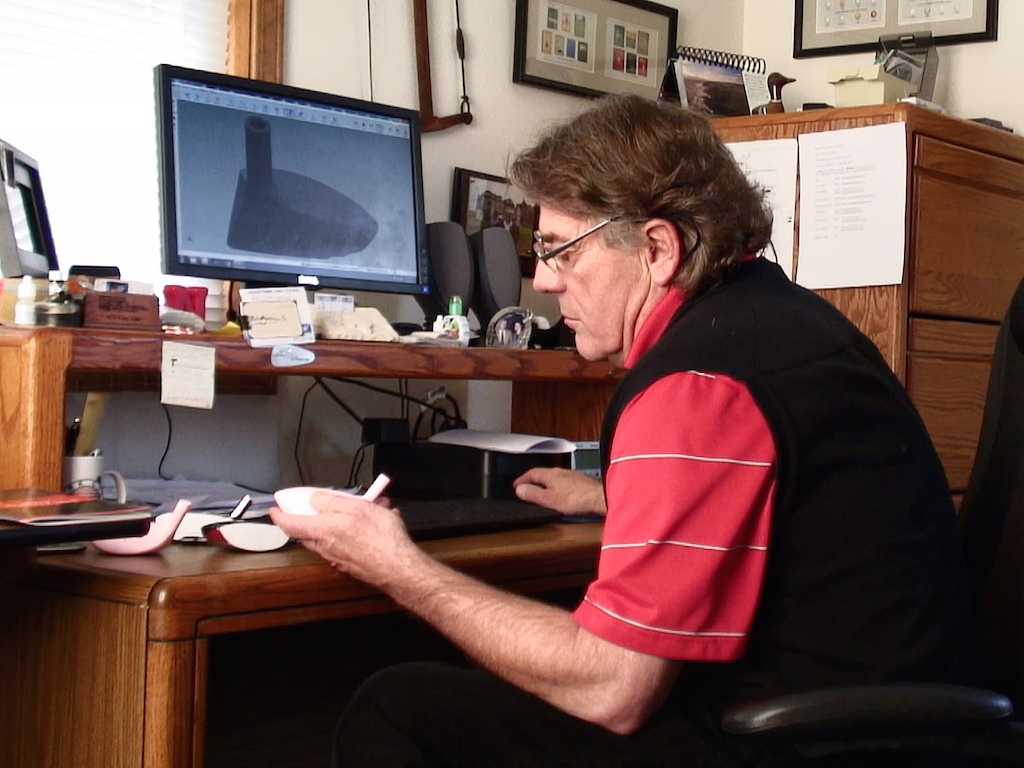
Most golfers have to like the way their clubs look at address, so the psychological side of club head selection is very important. If golfers don’t like the way their new clubs look, the success of the overall fitting can be in jeopardy — regardless of how much improvement there is.
That’s why it’s important to fit golfers into club heads that have the potential to improve their performance (misdirection tendency, overall launch conditions/trajectory, etc.), but also keep the shape and style of the club heads a priority.
Clubhead shape/style elements to identify and match to the golfer’s preference typically involve height and blade length of the head, sole width, topline width, topline slope, leading edge radii, offset/face progression, sole radius/bounce/design, back design, and so on.
But while most of these aspects of the “look” of the head may be judged on an esoteric or qualitative manner, there are most definitely performance-based elements of the head design that have to be a very important part of the fitting of the clubhead. As such, there always has to be a balance in the clubfitter’s recommendation and the golfer’s acceptance of the head model.
That’s why when we teach clubhead model fitting, we begin the process by stressing the following guideline to clubfitters:
- Within all of the clubhead models that satisfy the golfer’s personal preferences for shape features, style, finish and cosmetics, recommend the ones that have the highest MOI and the best off-center hit performance.
- If the golfer also needs the utmost in distance and forgiveness for his ability and game-improvement goals, expand your recommendation to include the ones with the best face design for highest COR and best variable thickness construction.
When it comes to the pure performance side of clubhead fitting, the more experienced clubfitters will also keep these points in mind:
- For golfers with a definite need to reduce a slice or hook, recommend driver, wood and hybrid models that are available in different face angle options or those can be adjusted or bent to achieve the correct face angle to reduce the misdirection tendency.
Center of Gravity (CG) changes — either higher/lower or closer/further back from the face to achieve trajectory, shot shape, spin and shot height fitting goals — certainly can be attempted in the head recommendation. The effect of such CG changes may not bring about as much shot shape improvement as hoped, however, because they are so much affected by individual golfer characteristics of clubhead speed, consistency of the delivery of the head to impact and swing error tendencies.
In other words, don’t expect too much change in shot shape from a CG difference in a clubhead unless you are a more accomplished player with a higher-than-average clubhead speed and a proper impact position.
This does not mean that the clubfitter should ignore the benefits of a lower or more rearward-located CG for golfers with slower swings speed or those who need help keeping the ball in the air. Just don’t expect a big change in doing so.
While the final decision for the clubhead is always in the hands of the golfer, clubfitters should do their best to diplomatically explain the tangible benefits for using a clubhead model with a higher level of game improvement features than the golfer may think they need. Golf is a tough game to begin with and using a clubhead that cannot reduce the negative effects of swing errors is not the wisest decision if the goal is to play to the best of your ability.
What matters, what doesn’t
It usually takes BIG differences in head design technology to bring about small-to-medium differences in shot performance.
- A COR difference of 0.030 or more is significant for distance increase. A difference of 0.010 is not.
- An MOI difference of more than 1000 g-cm2 is significant for improvement on off-center hits. A difference of 600 g-cm2 or less is not.
- A vertical CG difference of more than 5 millimeters is significant for shot height and spin differences. One less than that is not for the vast majority of golfers.
- A face-to-back difference in CG of more than 8 millimeters can be significant for shot height and spin differences, but only for golfers with later-to-very-late releases. A face-to-back difference in CG of 5 millimeters or less is insignificant even for later release players.
- The more radius on the iron sole from face to back, the better the sole design is for EVERY golfer to very slightly help reduce the degree of “fatness” of a slightly fat shot. More face-to-back sole radius is also good for more consistent sole-to-turf interaction with Bermuda-type turf as well as for shots hit from the rough.
Related
- What length should your clubs be?
- What lofts should your clubs be?
- Face angle is crucial for a proper fitting
- The best way to fit lie angle
- How to choose the right club head design
- Tom Wishon’s keys to set makeup
- Getting the right size grip, time after time
- What shaft weight should you play?
- What swing weight should your clubs be?
- What shaft flex should I use?
This story is part of a 10-part series from Tom Wishon on professional club fitting.
- LIKE122
- LEGIT15
- WOW8
- LOL5
- IDHT1
- FLOP10
- OB1
- SHANK8
19th Hole
Vincenzi’s 2024 Zurich Classic of New Orleans betting preview

The PGA TOUR heads to New Orleans to play the 2023 Zurich Classic of New Orleans. In a welcome change from the usual stroke play, the Zurich Classic is a team event. On Thursday and Saturday, the teams play best ball, and on Friday and Sunday the teams play alternate shot.
TPC Louisiana is a par 72 that measures 7,425 yards. The course features some short par 4s and plenty of water and bunkers, which makes for a lot of exciting risk/reward scenarios for competitors. Pete Dye designed the course in 2004 specifically for the Zurich Classic, although the event didn’t make its debut until 2007 because of Hurricane Katrina.
Coming off of the Masters and a signature event in consecutive weeks, the field this week is a step down, and understandably so. Many of the world’s top players will be using this time to rest after a busy stretch.
However, there are some interesting teams this season with some stars making surprise appearances in the team event. Some notable teams include Patrick Cantlay and Xander Schauffele, Rory McIlroy and Shane Lowry, Collin Morikawa and Kurt Kitayama, Will Zalatoris and Sahith Theegala as well as a few Canadian teams, Nick Taylor and Adam Hadwin and Taylor Pendrith and Corey Conners.
Past Winners at TPC Louisiana
- 2023: Riley/Hardy (-30)
- 2022: Cantlay/Schauffele (-29)
- 2021: Leishman/Smith (-20)
- 2019: Palmer/Rahm (-26)
- 2018: Horschel/Piercy (-22)
- 2017: Blixt/Smith (-27)
2024 Zurich Classic of New Orleans Picks
Tom Hoge/Maverick McNealy +2500 (DraftKings)
Tom Hoge is coming off of a solid T18 finish at the RBC Heritage and finished T13 at last year’s Zurich Classic alongside Harris English.
This season, Hoge is having one of his best years on Tour in terms of Strokes Gained: Approach. In his last 24 rounds, the only player to top him on the category is Scottie Scheffler. Hoge has been solid on Pete Dye designs, ranking 28th in the field over his past 36 rounds.
McNealy is also having a solid season. He’s finished T6 at the Waste Management Phoenix Open and T9 at the PLAYERS Championship. He recently started working with world renowned swing coach, Butch Harmon, and its seemingly paid dividends in 2024.
Keith Mitchell/Joel Dahmen +4000 (DraftKings)
Keith Mitchell is having a fantastic season, finishing in the top-20 of five of his past seven starts on Tour. Most recently, Mitchell finished T14 at the Valero Texas Open and gained a whopping 6.0 strokes off the tee. He finished 6th at last year’s Zurich Classic.
Joel Dahmen is having a resurgent year and has been dialed in with his irons. He also has a T11 finish at the PLAYERS Championship at TPC Sawgrass which is another Pete Dye track. With Mitchell’s length and Dahmen’s ability to put it close with his short irons, the Mitchell/Dahmen combination will be dangerous this week.
Taylor Moore/Matt NeSmith +6500 (DraftKings)
Taylor Moore has quickly developed into one of the more consistent players on Tour. He’s finished in the top-20 in three of his past four starts, including a very impressive showing at The Masters, finishing T20. He’s also finished T4 at this event in consecutive seasons alongside Matt NeSmith.
NeSmith isn’t having a great 2024, but has seemed to elevate his game in this format. He finished T26 at Pete Dye’s TPC Sawgrass, which gives the 30-year-old something to build off of. NeSmith is also a great putter on Bermudagrass, which could help elevate Moore’s ball striking prowess.
- LIKE6
- LEGIT2
- WOW1
- LOL0
- IDHT0
- FLOP3
- OB1
- SHANK1
19th Hole
Vincenzi’s 2024 LIV Adelaide betting preview: Cam Smith ready for big week down under

After having four of the top twelve players on the leaderboard at The Masters, LIV Golf is set for their fifth event of the season: LIV Adelaide.
For both LIV fans and golf fans in Australia, LIV Adelaide is one of the most anticipated events of the year. With 35,000 people expected to attend each day of the tournament, the Grange Golf Club will be crawling with fans who are passionate about the sport of golf. The 12th hole, better known as “the watering hole”, is sure to have the rowdiest of the fans cheering after a long day of drinking some Leishman Lager.
The Grange Golf Club is a par-72 that measures 6,946 yards. The course features minimal resistance, as golfers went extremely low last season. In 2023, Talor Gooch shot consecutive rounds of 62 on Thursday and Friday, giving himself a gigantic cushion heading into championship Sunday. Things got tight for a while, but in the end, the Oklahoma State product was able to hold off The Crushers’ Anirban Lahiri for a three-shot victory.
The Four Aces won the team competition with the Range Goats finishing second.
*All Images Courtesy of LIV Golf*
Past Winners at LIV Adelaide
- 2023: Talor Gooch (-19)
Stat Leaders Through LIV Miami
Green in Regulation
- Richard Bland
- Jon Rahm
- Paul Casey
Fairways Hit
- Abraham Ancer
- Graeme McDowell
- Henrik Stenson
Driving Distance
- Bryson DeChambeau
- Joaquin Niemann
- Dean Burmester
Putting
- Cameron Smith
- Louis Oosthuizen
- Matt Jones
2024 LIV Adelaide Picks
Cameron Smith +1400 (DraftKings)
When I pulled up the odds for LIV Adelaide, I was more than a little surprised to see multiple golfers listed ahead of Cameron Smith on the betting board. A few starts ago, Cam finished runner-up at LIV Hong Kong, which is a golf course that absolutely suits his eye. Augusta National in another course that Smith could roll out of bed and finish in the top-ten at, and he did so two weeks ago at The Masters, finishing T6.
At Augusta, he gained strokes on the field on approach, off the tee (slightly), and of course, around the green and putting. Smith able to get in the mix at a major championship despite coming into the week feeling under the weather tells me that his game is once again rounding into form.
The Grange Golf Club is another course that undoubtedly suits the Australian. Smith is obviously incredibly comfortable playing in front of the Aussie faithful and has won three Australian PGA Championship’s. The course is very short and will allow Smith to play conservative off the tee, mitigating his most glaring weakness. With birdies available all over the golf course, there’s a chance the event turns into a putting contest, and there’s no one on the planet I’d rather have in one of those than Cam Smith.

Louis Oosthuizen +2200 (DraftKings)
Louis Oosthuizen has simply been one of the best players on LIV in the 2024 seas0n. The South African has finished in the top-10 on the LIV leaderboard in three of his five starts, with his best coming in Jeddah, where he finished T2. Perhaps more impressively, Oosthuizen finished T7 at LIV Miami, which took place at Doral’s “Blue Monster”, an absolutely massive golf course. Given that Louis is on the shorter side in terms of distance off the tee, his ability to play well in Miami shows how dialed he is with the irons this season.
In addition to the LIV finishes, Oosthuizen won back-to-back starts on the DP World Tour in December at the Alfred Dunhill Championship and the Mauritus Open. He also finished runner-up at the end of February in the International Series Oman. The 41-year-old has been one of the most consistent performers of 2024, regardless of tour.
For the season, Louis ranks 4th on LIV in birdies made, T9 in fairways hit and first in putting. He ranks 32nd in driving distance, but that won’t be an issue at this short course. Last season, he finished T11 at the event, but was in decent position going into the final round but fell back after shooting 70 while the rest of the field went low. This season, Oosthuizen comes into the event in peak form, and the course should be a perfect fit for his smooth swing and hot putter this week.

- LIKE10
- LEGIT3
- WOW0
- LOL1
- IDHT0
- FLOP1
- OB1
- SHANK1
Opinion & Analysis
The Wedge Guy: What really makes a wedge work? Part 1

Of all the clubs in our bags, wedges are almost always the simplest in construction and, therefore, the easiest to analyze what might make one work differently from another if you know what to look for.
Wedges are a lot less mysterious than drivers, of course, as the major brands are working with a lot of “pixie dust” inside these modern marvels. That’s carrying over more to irons now, with so many new models featuring internal multi-material technologies, and almost all of them having a “badge” or insert in the back to allow more complex graphics while hiding the actual distribution of mass.
But when it comes to wedges, most on the market today are still single pieces of molded steel, either cast or forged into that shape. So, if you look closely at where the mass is distributed, it’s pretty clear how that wedge is going to perform.
To start, because of their wider soles, the majority of the mass of almost any wedge is along the bottom third of the clubhead. So, the best wedge shots are always those hit between the 2nd and 5th grooves so that more mass is directly behind that impact. Elite tour professionals practice incessantly to learn to do that consistently, wearing out a spot about the size of a penny right there. If impact moves higher than that, the face is dramatically thinner, so smash factor is compromised significantly, which reduces the overall distance the ball will fly.
Every one of us, tour players included, knows that maddening shot that we feel a bit high on the face and it doesn’t go anywhere, it’s not your fault.
If your wedges show a wear pattern the size of a silver dollar, and centered above the 3rd or 4th groove, you are not getting anywhere near the same performance from shot to shot. Robot testing proves impact even two to three grooves higher in the face can cause distance loss of up to 35 to 55 feet with modern ‘tour design’ wedges.
In addition, as impact moves above the center of mass, the golf club principle of gear effect causes the ball to fly higher with less spin. Think of modern drivers for a minute. The “holy grail” of driving is high launch and low spin, and the driver engineers are pulling out all stops to get the mass as low in the clubhead as possible to optimize this combination.
Where is all the mass in your wedges? Low. So, disregarding the higher lofts, wedges “want” to launch the ball high with low spin – exactly the opposite of what good wedge play requires penetrating ball flight with high spin.
While almost all major brand wedges have begun putting a tiny bit more thickness in the top portion of the clubhead, conventional and modern ‘tour design’ wedges perform pretty much like they always have. Elite players learn to hit those crisp, spinny penetrating wedge shots by spending lots of practice time learning to consistently make contact low in the face.
So, what about grooves and face texture?
Grooves on any club can only do so much, and no one has any material advantage here. The USGA tightly defines what we manufacturers can do with grooves and face texture, and modern manufacturing techniques allow all of us to push those limits ever closer. And we all do. End of story.
Then there’s the topic of bounce and grinds, the most complex and confusing part of the wedge formula. Many top brands offer a complex array of sole configurations, all of them admittedly specialized to a particular kind of lie or turf conditions, and/or a particular divot pattern.
But if you don’t play the same turf all the time, and make the same size divot on every swing, how would you ever figure this out?
The only way is to take any wedge you are considering and play it a few rounds, hitting all the shots you face and observing the results. There’s simply no other way.
So, hopefully this will inspire a lively conversation in our comments section, and I’ll chime in to answer any questions you might have.
And next week, I’ll dive into the rest of the wedge formula. Yes, shafts, grips and specifications are essential, too.
- LIKE32
- LEGIT7
- WOW1
- LOL1
- IDHT2
- FLOP3
- OB1
- SHANK3
-

 19th Hole2 weeks ago
19th Hole2 weeks agoDave Portnoy places monstrous outright bet for the 2024 Masters
-

 19th Hole2 weeks ago
19th Hole2 weeks agoTiger Woods arrives at 2024 Masters equipped with a putter that may surprise you
-

 19th Hole1 day ago
19th Hole1 day ago‘Absolutely crazy’ – Major champ lays into Patrick Cantlay over his decision on final hole of RBC Heritage
-

 19th Hole3 weeks ago
19th Hole3 weeks agoReport: Tiger Woods has ‘eliminated sex’ in preparation for the 2024 Masters
-

 19th Hole1 week ago
19th Hole1 week agoTwo star names reportedly blanked Jon Rahm all week at the Masters
-

 19th Hole1 week ago
19th Hole1 week agoReport: LIV Golf identifies latest star name they hope to sign to breakaway tour
-

 19th Hole1 week ago
19th Hole1 week agoNeal Shipley presser ends in awkward fashion after reporter claims Tiger handed him note on 8th fairway
-

 19th Hole6 days ago
19th Hole6 days agoBrandel Chamblee has ‘no doubt’ who started the McIlroy/LIV rumor and why

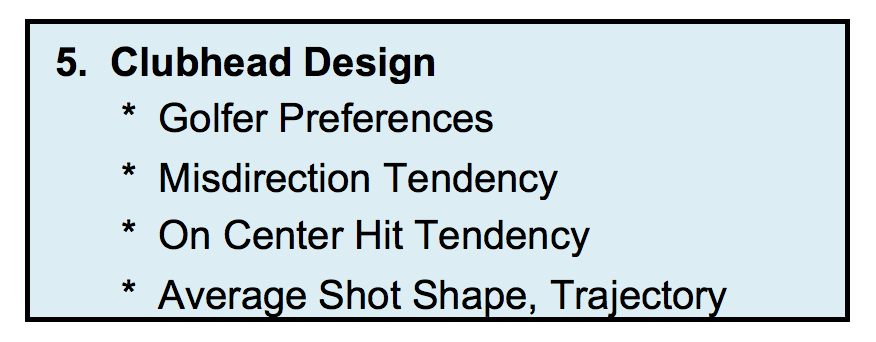
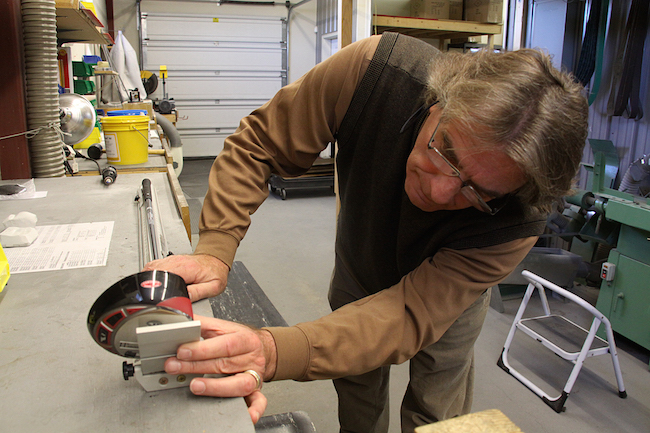


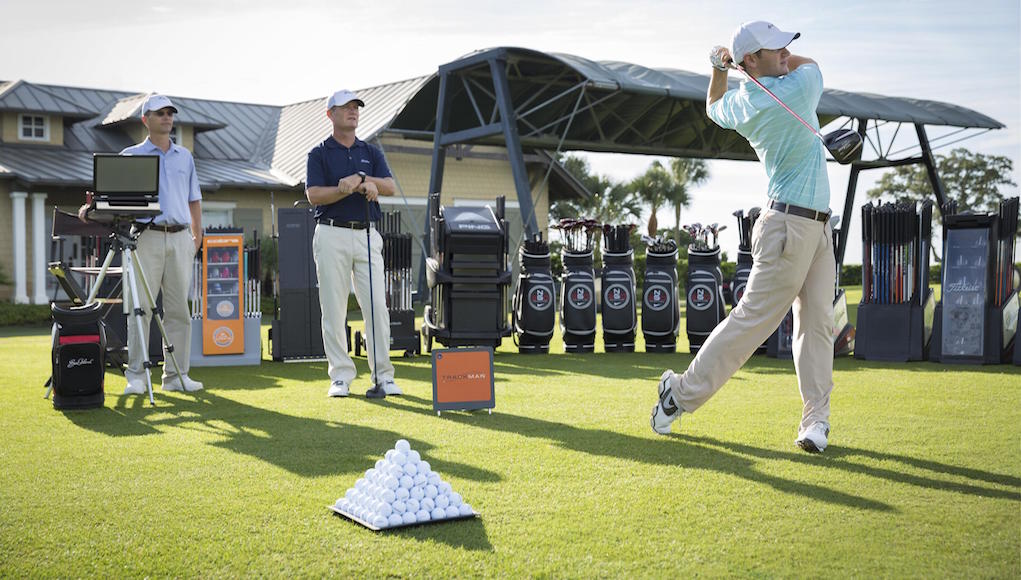
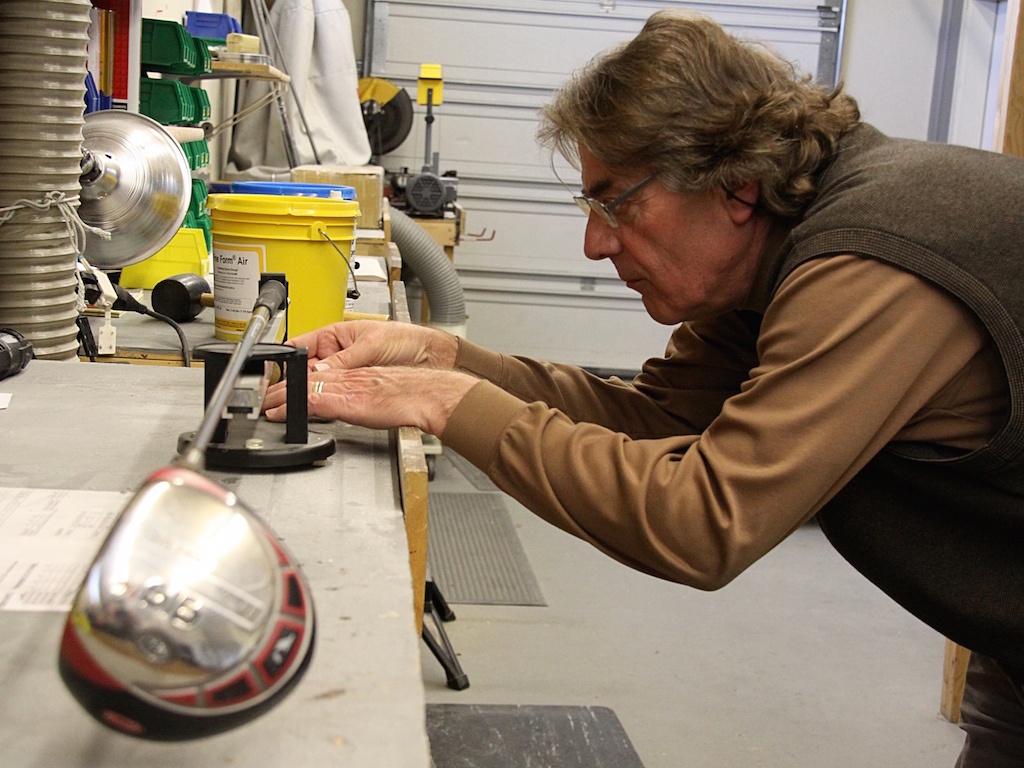

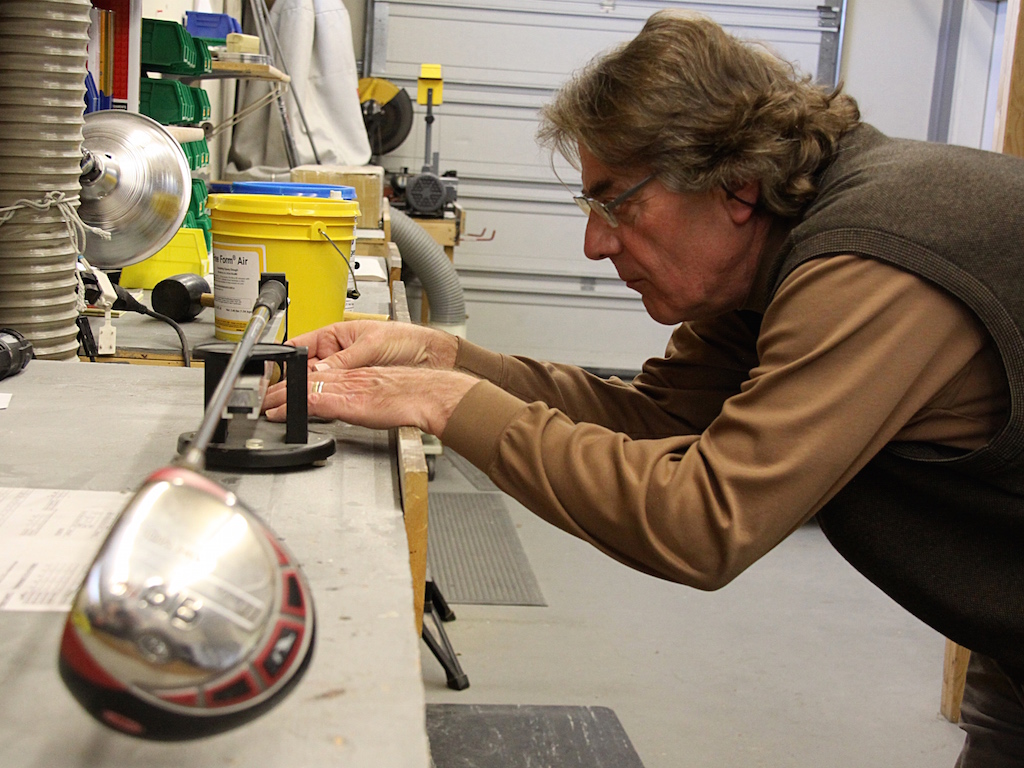
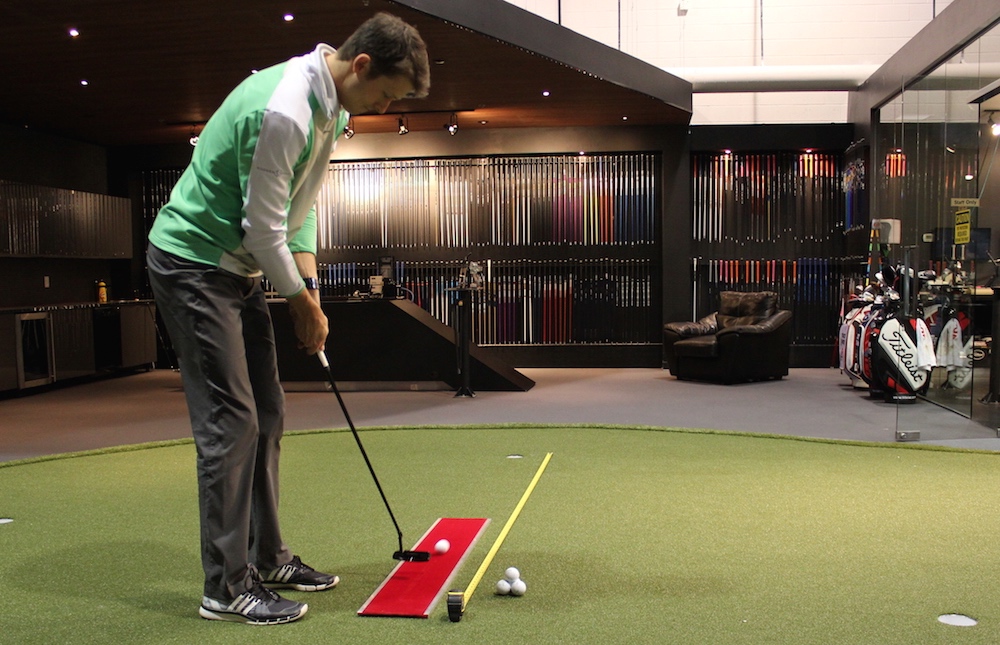
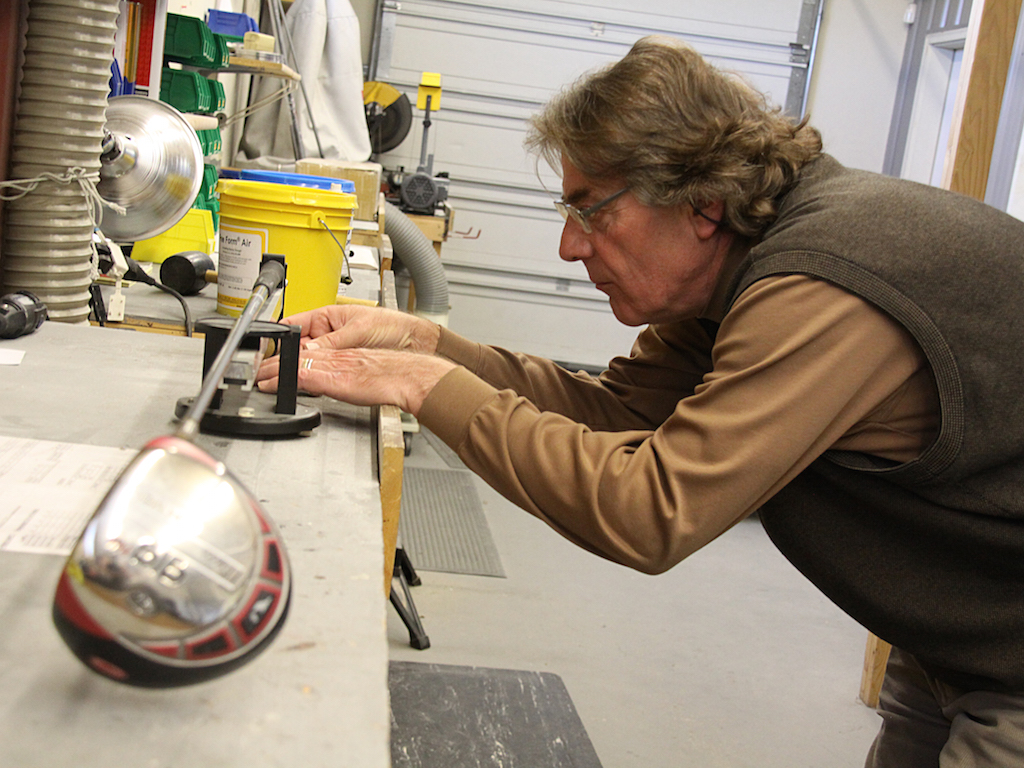












dime bag
Feb 4, 2015 at 8:43 pm
When my 4 year gets crabby we put him in a special chair called the “pouty place”. Does Keith need to sit in the “pouty place” for a while until he can act like a big guy?
Keith
Feb 4, 2015 at 9:11 pm
Yes, I think I do…but I just had a Snickers bar so I think I am better now.
JOEL GOODMAN
Feb 4, 2015 at 8:32 pm
why the negativity from these guys? If you don’t like it , go away. Tom Wishon has forgotten more about golf clubs than 99% of people will ever learn. He is pure genius and is worth listening to and reading his views. WRX is a superb vehicle for information not available through the “how to cure your slice”media. I love it and think Tom Wishon is terrific. Disclosure-I have purchased and built clubs using Wishon components and am using one of his drivers. I also play Mizuno MP68 irons, and wedges. I live in south Florida, age 79 index 7.7 and play 5 days every week, 52 weeks a year–JEALOUS?????
chris
Feb 4, 2015 at 8:56 pm
I could agree more, being new to this site I have found Tom’s articles to be the most informative that I have read here. Keep up the good work Tom.
Keith
Feb 4, 2015 at 9:13 pm
Yes, I am jealous…and…Yes, I agree Mr. Wishon is a genius and makes a great product.
Benny
Feb 4, 2015 at 7:12 pm
Awesome stuff Tom, makes complete sense. I have a couple friends of mine who bought Wishon that were properly fitted and while very high handicappers their games have really improved and feel it’s from proper fitting. Most amateur golfers are very steep in their swings. They stand very up right and close to the ball so the angle is steep and adding the radius helps them. Add this to your adjustable hozels on your woods/drivers and you really have the best fitted clubs money can buy. Never mind priced way below most manufactures. You just cannot beat it and I am extremely excited to be getting my woods from one of your builders this spring.
Please keep this info coming because even the negative talk on here is helping get your points across. Thanks Tom, thanks WRX!
Bob
Feb 4, 2015 at 12:22 pm
Is he saying the wider the sole the better it is for all players.
Shallowface
Feb 4, 2015 at 3:50 pm
You can certainly have face to back radius or camber in a narrow sole, so I don’t think Tom was saying that the sole has to be wide.
Tom Wishon
Feb 4, 2015 at 5:41 pm
shallowface
Not sole width – I was talking about the sole radius in the direction from front to back across the sole being good for all players. Add a rounding of the leading edge from sole around to face and that is better for everyone too. Such sole designs stand up better for those with more downward angle of attack into the ball, and they can help slightly for shots from the rough because the greater front to back sole radius offers less surface contact to the grass for a little less chance of the sole hanging up in the rough.
myron miller
Feb 4, 2015 at 12:08 pm
Tom, I notice you don’t talk about CT time for any of the clubs, especially the driver as being important. Is it because you don’t feel its a factor or what?
I’m asking because at least one driver manufacturer tries to emphasis its higher CT time as being critical to improving distance. Personally I don’t see how CT time on the face makes that much difference especially considering all the differences in golf ball hardness.
Tom Wishon
Feb 4, 2015 at 6:01 pm
Myron
In the article I did say this. . .
Within all of the clubhead models that satisfy the golfer’s personal preferences for shape features, style, finish and cosmetics, recommend the ones that have the highest MOI and the best off-center hit performance.
If the golfer also needs the utmost in distance and forgiveness for his ability and game-improvement goals, expand your recommendation to include the ones with the best face design for highest COR and best variable thickness construction.
Thus the comment about highest COR as a part of a clubhead recommendation for a golfer who needs/wants the utmost in distance. CT/COR is a non issue with drivers and has been for a long time because virtually every titanium driver made since the late 90s has been maximized for COR to be as close to the limit as the company’s production of the head will allow under normal +/- tolerances. Of course if the golfer wants to eek out the absolute most in driver COR, he can hit several models and look for the one that records a smash factor of 1.49-1.50 which is the max possible for an 0.830 COR/257 CT face measurement.
CT is just a different form of test to enable the USGA to assess the ability of the face to flex inward at impact more quickly than it takes to run an actual air cannon COR test. With driver heads, CT is correlatable to an actual COR test measurement. It is not in irons. So the reason CT is pertinent to distance is because the more you get the face to flex at impact without deforming, the less energy is lost in the collision between the face and the ball. That right there is the basic science behind COR. From this comes the higher ball speed in relation to the clubhead speed – aka smash factor. So if you have a driver with a CT of say, 260 and one at 240, without question the ball speed in relation to clubhead speed for the 260CT will be higher than the one at 240, and from this will come more distance if the loft and everything else is fit correctly to the golfer.
Let me explain how this works with respect to different ball compression types and ball construction. With a low COR head, in the collision between the face and the ball, 80% of the energy loss from the impact comes from the compression of the ball against the face. Squash the ball more, you lose more energy. 20% comes from the face flexing inward only a tiny bit as a low COR head. If you allow the face to flex inward more, what you do is you greatly reduce the amount that the ball squashes against the face. So the ball’s energy loss is much less than the increase in energy loss from the face flexing inward a little more.
To grasp this, realize that the face of an 0.830 COR driver flexes inward just short of 1/16″ at impact. The face of a low COR (0.780) driver flexes inward a little less than 1/32″. So just for an additional 1/32″ of face flexing, the energy transfer is much greater due to a lot less squashing of the ball so the ball speed can increase quite a bit in relation to the clubhead speed.
With a soft ball like a Noodle, with a low COR head, that ball at 100mph clubhead speed will squash around 30% of its diameter. Change to a high COR head and that same ball now squashes around 20% of its diameter, thus reducing the energy loss and increasing the energy transfer to the shot to get more ball speed. With a hard solid ball, with a low COR head, that ball at 100mph clubhead speed will squash around 20% of its diameter. Change to a high COR head and that same ball now squashes around 12% of its diameter, thus reducing the energy loss and increasing the energy transfer to the shot to get more ball speed.
So the high COR face design works to increase ball speed and distance no matter what the ball construction.
chris
Feb 4, 2015 at 8:33 pm
That was a very informative reply for those of us who don’t have a strong grasp of what happens to the and the club face at impact.
Keith
Feb 4, 2015 at 11:38 am
I am slightly confused by these articles…are these just long advertorials as a point of differentiation from other manufacturers? It seems like a conflict of interest to have a manufacturer of golf clubs writing articles for your site without slugging this as an advertisement…especially if you drive to his site at the bottom of the page.
You may not be explicitly selling his product, by you are advertising his process and have alluded to others not being as thorough in previous articles. Being part of the Conde Nast family you would think your editors would know this is not okay….but alas you will probably delete this comment and continue as usual.
Zak Kozuchowski
Feb 4, 2015 at 11:46 am
Keith,
First off, GolfWRX is independently owned and operated — not part of the Conde Nast family or affiliated with Conde Nast in any way.
Secondly, this is not an advertisement. Tom Wishon is a GolfWRX Contributor and part of our Featured Writers program. We’re working with him on this series because we think he can help our readers better understand club fitting and their club fitting needs. He does not pay us to publish this stories.
Last, we only delete comments that are wildly off topic, use inappropriate language or personally attack or authors. If you’ve had a comment deleted, that’s why.
– Zak Kozuchowski
GolfWRX Managing Editor
Shallowface
Feb 4, 2015 at 12:05 pm
I consider myself to be highly sensitive to the things Keith mentions, and I consider Tom’s articles to be just fine. Anything that helps us be more educated consumers is most welcome, and from a lot of what I read here is sorely needed.
Looking forward to the rest of the series!
Keith
Feb 4, 2015 at 3:18 pm
I appreciate the response, but respectfully disagree with what you have said here. This is absolutely an advertisement and your readers should know that. You are driving to his company site in which his whole sales pitch is custom fitting. I find it hard to believe that site traffic and conversion (lead) is not being tracked on wishongolf.com from GolfWrx.com.
I don’t have an issue with the article and agree it may be helpful…but it is without a doubt advertising.
Also, does your partnership with Golf Digest for content production and distribution not count as being affiliated with Conde Nast? Perhaps we are forgetting about this comment
“Joining forces with an established and authoritative brand such as the Golf Digest Properties will resonate with the passionate community we’ve cultivated with GolfWrx,” said Richard Audi, president of GolfWrx. “We welcome the contributions of its editors and look forward to creating innovative new offerings for advertisers in the conversational web.”
Zak Kozuchowski
Feb 4, 2015 at 3:38 pm
Keith,
GolfWRX is no longer associated with Golf Digest, and has and always has been independently owned and operated.
We have and will continue to have contributors write for us about things we consider to be valuable to our readers.
Let’s not muck up this comments section with unrelated comments any further.
Keith
Feb 4, 2015 at 3:43 pm
Zak…come on..really…no longer affiliated? I will let it go because I am a fan of the site, that is fine.
Steven
Feb 4, 2015 at 2:41 pm
Where the f@#$ did you get the idea WRX was part of Conde Nast?
And who the f@#$ still uses the term ‘but alas’?
Since you don’t know, WRX was started and still run by a few guys in Detroit, with a handful of very involved contributors across the country.
https://www.youtube.com/watch?v=lBIt-p5ruBM
Keith
Feb 4, 2015 at 3:46 pm
Hahahaha thank you for sharing that link, one of my favorite episodes and I 100% agree. You seem like a real stand up guy Steven!